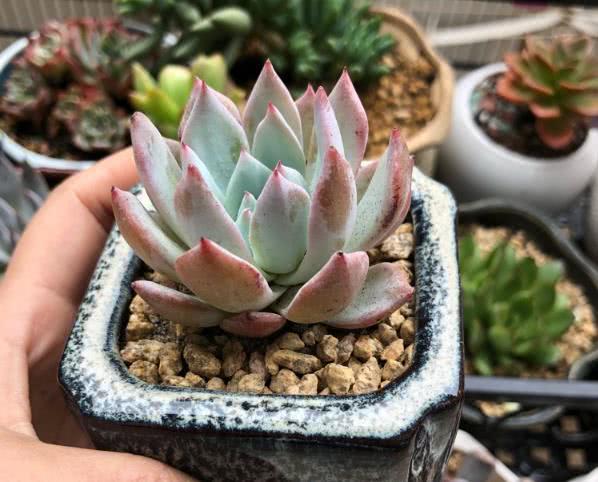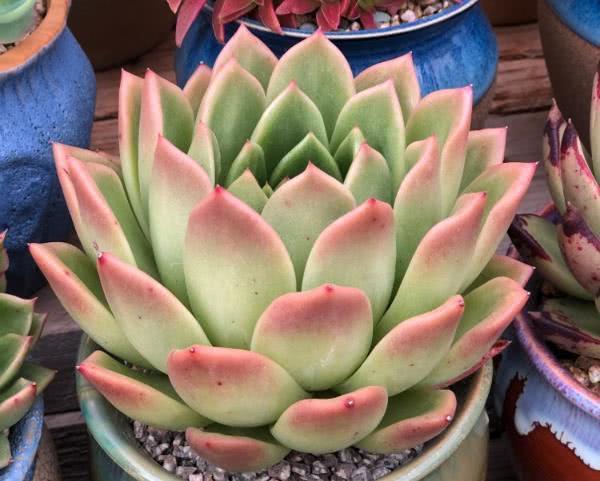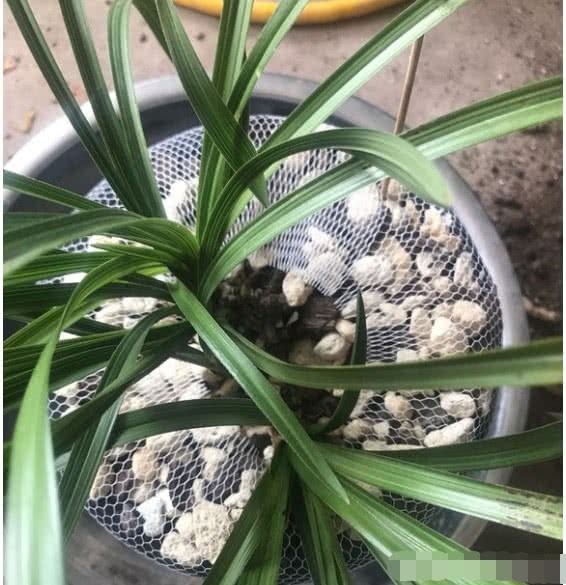The daily maintenance skills of succulent plants are simple and easy to learn.

Choosing a suitable flowerpot is very important for the cultivation of succulent plants. According to the characteristics of water absorption by the roots of this kind of flowers, the absorption rate is not the fastest when it is first watered, but best when the surface of the basin soil is slightly dry and the inside of the basin soil is still moist. Therefore, the use of purple sand basin is the best choice, and the cultivation effect is much better than that of mud basin and plastic basin.
When long-term cultivation with plastic pots, we must beware of basin cracking caused by plastic aging, if not careful, it will cause water shortage of plants. The size and depth of the basin should depend on the plant shape and root system. After the general spherical plant is planted, the edge of the basin should be left with a depth of 1cm to 1.5cm, and the shallow basin should not be used as far as possible. After the plant is put into the basin, the root neck is slightly lower than the mouth of the basin.
Fertilization is generally carried out in spring and autumn, and the high temperature period in midsummer stops. If there is heating in winter, fertilizer can be applied to some species that continue to grow or blossom in winter, but not for most species. The concentration of fertilization should be mastered rather than light rather than thick, and would rather be applied several times rather than risk applying thick fertilizer at once.
New plants should not be fertilized for a month. Do not use salty vegetable soup and fresh milk and soy milk. Before fertilization, let the basin soil as dry as possible, take off some poor growth, root problems may be placed separately, and then loosen the soil and then fertilize. Watering in winter should be at a sunny noon, and the frequency of watering should be reduced, because winter plants do not need so much water. Watering conditions must soak the basin, do not sprinkle, wet the plant.
Entering autumn, the temperature drops slightly, coupled with the increase of temperature difference between day and night, succulent plants gradually resume growth and can be watered more. Because succulent plants have the characteristic of growing at night, they can be watered properly according to the change of air temperature. Watering in the early autumn evening and late autumn afternoon is beneficial to plant growth. Water less on cloudy days and stop watering on rainy days. Succulent plants are kept indoors for maintenance in autumn, and an appropriate increase in air humidity is beneficial to succulent plants originating at high altitude. during the autumn growth period, relative humidity is kept between 45% and 50%, and a few varieties can reach 70%.
In winter, the growth of succulent plants becomes slow, and some summer type species even go dormant. Most of them have a limited ability to tolerate low temperatures, so it is urgent to get sunny indoor windows. In winter, the transpiration capacity of plants is weak, and the evaporation of soil water is slow, so it is necessary to reduce the amount of water and frequency.
Here is a gathering place for succulent plant lovers, sharing succulent maintenance skills, welcome to follow and exchange.
- Prev

Succulent plants are put into the pot after root trimming. The root system is easy to rot to avoid.
The succulent plants bought online or in the greenhouse all need to be stripped, trimmed and washed. On the one hand, it is to prevent carrying eggs, on the other hand, it can remove necrotic roots and prevent black rot. At the same time, trimming the overgrown roots can also reduce the nutrient flow.
- Next

The leaf shape of the orchid is very beautiful. if the orchid pot is too crowded, turn the pot and divide it.
Disrelish that the orchid pot is too crowded, turn the basin to divide it. This autumn, which is easy to raise, is the key period for orchids to give birth to flower buds. Whether the flower buds grow well or not affects the flowering and fruiting of orchids. Orchids like places with good ventilation, if at home.
Related
- Wuhan Hospital Iron Tree Blooming Result Was Instantly Frightened by the Gardener Master
- Which variety of camellia is the most fragrant and best? Which one do you like best?
- What is the small blue coat, the breeding methods and matters needing attention of the succulent plant
- Dormancy time and maintenance management of succulent plants during dormancy
- Minas succulent how to raise, Minas succulent plant pictures
- What are the varieties of winter succulent plants
- How to raise succulent plants in twelve rolls? let's take a look at some experience of breeding twelve rolls.
- Attention should be paid to water control for succulent plants during dormant period (winter and summer)
- Watering experience of twelve rolls of succulent plants
- Techniques for fertilizing succulent plants. An article will let you know how to fertilize succulent plants.

